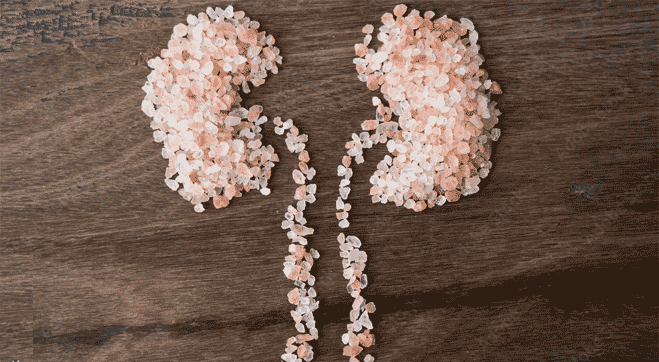Diabetes: a very well-known metabolic disorder Uhas gained immense popularity in recent times because of the epidemie proportions to which the affected have risen in numbers. India is fast rising to become the diabetes capital of the world and this noncommunicable ailment has become a major healthcare burden, not only because of the condition itself, but the other spectrum of organ damage this sugar rush condition fuels. A disorder believed to affect only old adults, today strikes even the young of the country. Once diagnosed with diabetes, life is not the same anymore and the affected individual has to juggle between day-to-day aspects. Right from keeping a tab on number of meal portions & their timings to following exercise regimes and medications; a diabetic has to know it all!
To define diabetes briefly, it is a condition wherein there is a hike in the levels of glucose in blood over a certain limit. This hike is either due to decreased production or inability of the body to utilise insulin; a hormone responsible for metabolism of blood glucose. Diabetes as a disorder not only affects ability of our body to metabolise glucose, but also eventually gives rise to many other complications such as affecting various organs and systems in our body. “Diabetic Nephropathy” is one of the many such complications that arise due to uncontrolled diabetes.
What is Diabetic Nephropathy?
Diabetic nephropathy also known as Diabetes Kidney Disease (DKD) is a clinical syndrome characterised by the presence of kidney diseases or any kind of kidney damage fueled by uncontrolled diabetes. It is regarded to be one of the popular long-term complications in individuals with type 1 and type 2 diabetes. It is mostly caused as a result of damage to the small blood vessels of the kidneys. This damage eventually leads to gradual impairment in the kidneys’ functions thus forming a prime cause for end-stage renal disease. To add more to the adversity, diabetic nephropathy is also associated with increased cardiovascular mortality. In the following context, let’s understand this crucial complication that arises due to diabetes.
kidneys are remarkable organs. Inside them are millions of tiny blood vessels (capillaries) that act as filters and remove toxins wastes from the blood. Sometimes this filtering system breaks down leading to kidney diseases. Over anywhere from 10 to 20 years, diabetes can affect the ability of kidneys to filter out toxins. As per studies, 1 in every 5 Indians have some form of kidney disease. In addition, 50% of people with diabetes experience some form of kidney damage in their lifetime. Kidney (renal) failure or commonly referred to as nephropathy, s usually listed as a long-term consequence of diabetes.It is important to understand the connection between kidney, blood pressure and diabetes. After all, it is not so much that diabetes is the problem, it is the high blood glucose ! Now let’s get started and see what we can find out to help Richa, and possibly you as well!
Kidneys and how diabetes affects its functions
Human body is blessed with a pair of bean shaped organs; kidneys. These are enrolled
with the duty of expelling toxins and nitrogen based waste products that build-up in the
system with the help of a wide network of nephrons within them. The circulating blood
in the body is passed through the kidneys into the nephrons to filter out all the impurities
and waste, thus purifying the blood system. Along with an efficient filtering out of the
impurities, the kidneys secrete hormones to maintain chemical balance within the body
by reabsorption of vital nutrients. The kidneys are also efficient regulators of blood pressure
and Red blood cells production at times of low oxygen levels in the body
During the normal filtration process, kidneys efficiently retain important proteins and blood cells and remove unwanted waste products. However, in an individual with high levels of glucose in blood, during the course of continuous filtration, the nephrons (functional unit of kidneys) become scarred and narrow. The capillaries eventually start losing their important function of retaining important proteins, leading to their leakage in the urine. Proteinuria is the first sign of kidney damage (especially albumin).
The lack of proper functioning capillaries in the kidney eventually spreads the damage throughout the kidney causing them to lose their functions completely Diabetic nephropathy.
Is diabetes alone the risk factor?
Diabetic nephropathy arises due to uncontrolled diabetes, but it is also important to understand that not all individuals with diabetes have a risk towards this condition. Many other factors are also related and found to play a role in increasing risk towards diabetic nephropathy. It is also found to have a familial mode of inheritance highlighting influence of even genetic factors. Again various environmental factors, presence of high blood pressure, Hypertension and a poor control on blood glucose levels all together increases risk towards diabetic nephropathy. Other factors that may influence and increase the risk include obesity and Smoking. Also, individuals who are suffering from other complications related to diabetes (such as diabetic retinopathy, diabetic neuropathy) stand a chance of being susceptible to diabetic nephropathy.
Prevalence of diabetic nephropathy
Though diabetic nephropathy can cause complications in both type 1 and type 2 affected, it is more prevalent in the latter. In type 1 diabetes, the prevalence of nephropathy is known to increase with age of the individual and levels out after a particular age (15 years). But recent statistics have to an extent negated this fact, as many children in developed countries such as in the US show high rate of diabetic nephropathy in the age group of 12 to 18 years. Also, the prevalence is higher among males than females with type 1 diabetes.
In case of type 2 diabetes, the chances of realising the the development of nephropathy are less. This is mainly because the kidneys constantly strive to meet the failing functions of the capillaries and also, glucose levels management is undefined due to external factors playing a major role.
Stages of development
The development of diabetic nephropathy is classified into five principle stages. Stage 1 – Hypertrophic hyperfiltration: This is the initial stage of development wherein there is normal to considerable hike in the glomerular filtration rate (eGFR). This stage is found to last for approximately 5 years with a gradual increase in the size of the kidney and thus a rise in the renal plasma flow. The blood pressure and albumin levels are normal.
Stage 2 – The silent stage: This stage begins 2 years after the onset of the disease characterised by gradual damage with basement membrane thickening and proliferation of the mesangial cells. The individual will show no clinical signs of disease with GFR levels also returning back to normal.
Stage 3 – Microalbuminuria test stage: This is the first and the foremost clinically detectable sign of kidney damage as there is rise in levels of albumin in urine (albuminuria) upto 30-300 mg/dl. The blood pressure of the individual is either normal or may rise to a certain extent.
Stage 4 – Chronic renal failure stage: This is an irreversible stage of kidney failure and is marked by development of proteinuria (albumin > 300mg/dU), decrease in GFR (below 60mL/min/1.73m”) and increase in blood pressure.
Stage 5 – End-stage renal failure stage: This is the terminal stage and is marked by a very low GFR (< 15 mL/min/1.73mo). Patients in this stage are highly dependent on either kidney replacement or dialysis.
Signs and symptoms of Diabetic nephropathy
Diabetic nephropathy goes very well unnoticed in the early stages. This is mainly because
the kidneys assure to make up for the failing capillaries. Moreover, the early symptoms
related to kidney failure are not specific for diabetic nephropathy. Post progression of the
disease, symptoms manifested include:
– Presence of protein (albumin) in urine
– High levels of blood urea nitrogen (BUN) and Serum Creatinine
– Increase in urine output (frequent toilet breaks)
– Increased blood pressure
– Edema in ankles and legs causing frequentleg cramps
– Less need for insulin or antidiabetic medications
Other symptoms include weakness, morning sickness, nausea, itching and anemia.
Diagnosis of diabetic nephropathy
Diagnosis of diabetic nephropathy in type 1 diabetics is established easily than in case of type 2 diabetics. In case of type 2 diabeties, the onset of nephropathy is most of the time unknown mainly because of uncertainty in understanding diabetes development. The detection of initial stages for renal damage can be done by evaluating increase in the kidney size or any other morphological changes. The primary quantifiable diagnosis of diabetic nephropathy is through confirma- tion of microalbuminuria and macroalbuminuria. Also, evaluation of GFR forms the best indicator for deter mining degree of damage. Besides these important forms of differential diagnosis, understanding the history of the patient and physical examination are also crucial.
Imaging techniques such as ultrasonography are also suggested in patients with type 2 diabetes showing symptoms such as urinary tract obstructions, kidney stones and other urinary infections.
Treatment & Prevention of Diabetic nephropathy
The primary prevention strategy for diabetic nephropathy is trenting the risk factors of diabetes such as hypertension, smoking habits, glucose level control, lipid levels control, etc. The control and management of these factors are not only important from diabetes perspective, but also crucial for lessening the scope for any cardiovascular diseases. Also, keeping a tab on blood pressure levels is crucial as it is one of the factors that increases tension on the capillaries of the kidney during the filtration process. Use of medications such as aspirin to lower cardiovascular events in diabetics are also carried out. As diabetes progresses into nephropathy, the kidney also eventually loses its function of production of erythropoietin which may cause development of anemia. Hence, maintenance of hemoglobin levels also becomes crucial. Pyridoxamine dihydrochloride which act as inhibitor of advanced glycation end products (AGE) formation are used.” However, the renoprotective effects is still under scrutiny. AGEs interfere with the normal functioning of the kidneys and thus increase the chances of development of nephropathy. Besides all the treatment strategies, diet of the individual plays a very important role; and hence a proper diet regime that does not encourage increase in glucose and lipid levels in the body should be followed.
Diabetes is a slow and silent killer but being diagnosed with nephropathy is not the end of the world. Proper treatment measures and positive changes in lifestyle will ensure efficient management of diabetes and all other silent and fatal complications that may creep in; even nephropathy.
What percentage of diabetics develop nephropathy?
India has the largest number of diabetic patients in the world, estimated to be 7.2 crore
in the year 2017 and the statistics are expected to increase to 48% by the year 2045.”
Not everyone with diabetes develops kidney disease. Factors that can influence kidney
disease development include:
– Genetics
– High blood sugar
– High Blood Pressure
How Does Diabetes Cause Kidney Disease?
As blood flows through the blood vessels (capillaries) in kidneys, the waste products and toxins squeeze through them. Useful substances, such as protein and red blood cells, are too big to pass through the filter and stay in the blood, other substances that pass through it become a part of urine.
Diabetes can damage this system, as high levels of blood sugar makes the kidneys to filter large volume of blood. The kidney filters get clogged up and wear out eventually, resulting in the leakage of small amounts of albumin into the urine. Having small amounts of protein (albumin) in the urine , is called microalbuminuria. In other words, it is a condition when an abnormally high permeability (porosity) for albumin in the glomerulus of the kidney occurs.
When kidney disease is diagnosed early, during microalbuminuria, several treatments can keep kidney disease from getting worse. Having larger amounts of albumin (greater than 300 mg/day) in the urine is called macroalbuminuria.? When kidney disease is diagnosed later during macroalbuminuria, it is usually followed by End-Stage Kidney Disease.
Elevated blood glucose causes proteins in the kidney’s glomeruli to link together. When these proteins link together, they can cause scarring within the kidney. When the glomeruli get “scarred,” this condition is called Glomerulosclerosis. It takes many years for this condition to develop, and these scarred tissues gradually take over the whole kidney and all of the tissue. As this occurs, the kidneys are unable to perform their function of removing waste products from the body.
What is the earliest symptom of chronic renal failure?
In the early stages of renal failure, most people do not feel any difference. There are
often no symptoms in early Diabetic Nephropathy. As the kidney loses its function,
symptoms may appear. They include:
– Swelling in the hands, face, feet or ankles
– Trouble sleeping or concentrating
– Poor appetite
– Nausea
– Weakness
– Itching and extremely dry skin (end stage)
– Drowsiness(end stage)
– Abnormalities in the heart regular rhythm, due to increased potassium in the blood
– Muscle twitching
Lack of symptoms makes yearly screenings very important at detection and treatment of early renal failure. You can lose half of your kidney functioning and still not know it. In addition, increased protein in the urine can make the urine foamy.
What can You do to Prevent Diabetes From Damaging Your Kidneys?
With a rapid growing number of diabetics in India, what is more alarming is that the majority
of individuals diagnosed with kidney disease have not undergone any kidney function testing
before their kidney disease gets diagnosed. Screening for abnormal quantities of albumin in the
urine (albuminuria) and treating with drugs that reduce the activity of the renin
-angiotensinaldosterone system when albuminuria is persistently found, is very effective
to prevent the development and progression of Chronic Kidney Disease in people with diabetes.
Most of these patients are diagnosed incidentally or at a very late stage of their kidney disease. The main reason for this is a lack of awareness in the general population about the causes of kidney disease and the implications of a late diagnosis.
How often should your kidneys be tested?
Screening for albuminuria should be done every year after diagnosis in people with type 2 diabetes and the same after the first five years in people with type 1 diabetes.
Microalbuminor Albumin/Creatinine Ratio (Microalbuminuria Test)- A value less than 30 is considered normal.
Glomerular Filtration Rate – The Creatinine Ratio Glomerular Filtration Rate (eGFR) is being used increasingly to spot kidney disorders. Less than 60 ml/minute can signal kidney disease.
– Other measures to prevent kidney damage from diabetes
– Keep your blood glucose in target range
– Quit smoking-Cigarette smoking damages the circulation. Nicotine binds with
oxygen in your blood stream, and keeps oxygen from getting to body
– keep your blood pressure controlled-For most people with diabetes, a goal for blood
pressure is below 130/80.
– Keep your blood cholesterol controlled
– Stay active
– Eat healthy foods
– Avoid medications that can damage the kidneys
By identifying Richa’s microalbuminuria, the doctor may be able to offer treatments to keep her kidney disease from getting any worse. That is, she will need to selfmanage her condition. She must take measures to protect her kidneys now, and not wait until it worsens to macroalbuminuria”








